Hurricane Season Starts June 1st!
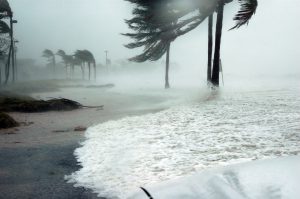
As we enter into this year’s hurricane season and people are reminded to gather appropriate stocks of water, medicines, pet supplies and nonperishables; be ready to board up their buildings and hunker down… have you ever wondered what happens to the wildlife left outdoors to weather a hurricane’s winds and torrential rain?
Hurricanes and other extreme weather events have an emotional and economic toll on humans. Our lands are impacted by storm surges, high winds, and excessive precipitation during these severe weather events. When it comes to wildlife, storms are neither universally good nor bad.
Thwarting the Storm
Just as we have technology that helps predict our upcoming weather, some wildlife have the ability to detect environmental changes that indicate an impending storm. Birds are able to pick up on changes in barometric pressure and infrared radiation signaling them to either begin their migration early or seek cover. Similarly, fast swimming marine animals, like certain bony fish and species of shark, detect barometric changes and make an exit to the deep sea.
While these are great adaptive features for some, territorial animals are unwilling to leave their homes and immobile wildlife is left to fare the storm. Others still have no clue of what’s to come.
Bracing for Impact
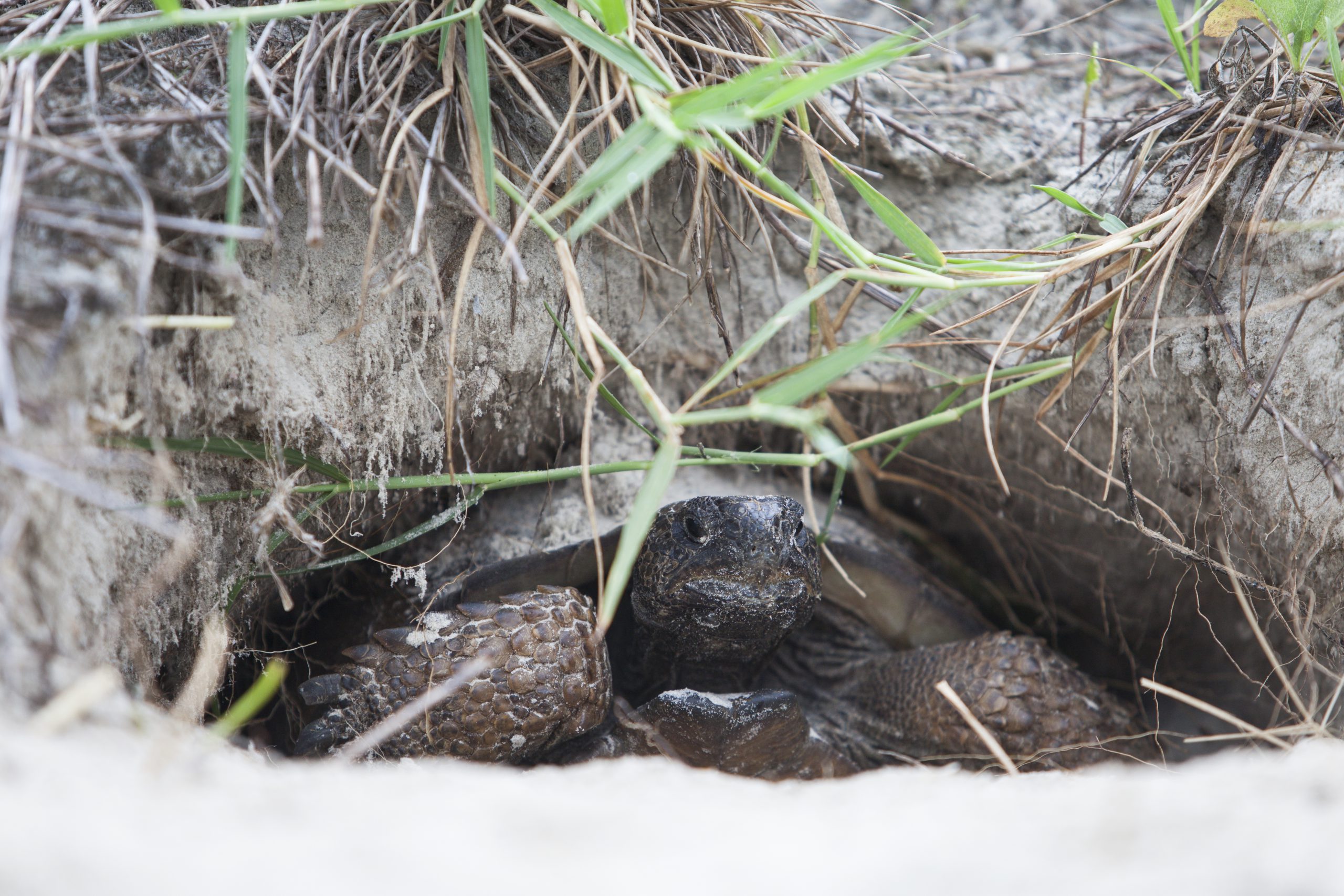
If unable to avoid the storm, many animals just hunker down! They may retreat into nests, cavities, and other dwellings. Burrowing animals are often the best off, but can be susceptible to flooding. Depending on the force of the winds, nests can be torn from trees, and vegetation may fall upon or trap even the best hidden creatures.
Marine animals fare little better. Fish and marine mammals can be thrown onto shore precipitating large fish kills or stranding manatees. Sea turtle nests may be washed out by storms, but fortunately they’re adapted to lay eggs periodically throughout the season for increased hatchling success.
And those are just the immediate consequences of a storm.
A New Landscape
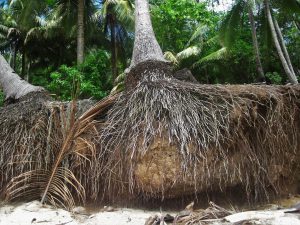
Once a storm passes, then what? Wildlife may be left to navigate an altered environment of standing water, downed trees, depleted food supplies, and uprooted vegetation.
Fresh Start
Some animals thrive in these upended conditions. Scavengers like racoons and vultures take full advantage of new food sources. Amphibians and insects make good use of standing water as breeding grounds. Downed vegetation can also help create habitat for animals like bears, and provide sustenance for herbivores like deer.
While there are native opportunists who take advantage of the openings offered by storms, these disturbances can provide conditions for invasive plants to thrive. Exotic pets may escape enclosures, multiplying in the wild. With characteristically high reproductive rates and other adaptive advantages, invasive plant and animal species alike have the freedom to colonize disturbed areas as native species recover.
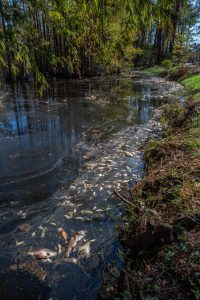
Fatal Disturbance
For wildlife less readily adaptable, the new environment they encounter may be less hospitable than pre-storm conditions. Herbivores who have their food source disturbed may be unable to survive the season as a storm often uproots vegetation and washes out caches.
Marine animals unable to escape the storm like slow swimming fish, crustaceans, and mollusks may encounter a drastically changing and hazardous environment. They can be thrown around by the ocean’s currents. A lower dissolved oxygen level and rapidly changing salinity due to the mixing of shallow and deep ocean waters can be detrimental. Sediment churning in the ocean and eroding off the coasts impacts water quality for fish. Sediments can deposit on coral reefs interfering with the coral’s symbiotic algae’s ability to photosynthesize, which can lead to reef death.
Human Help
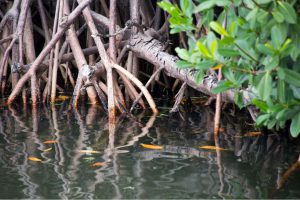
What immediate, or long-term actions are you taking to minimize the impact of storms? As hurricane season progresses, continue to consider what is happening to our furry, feathered, and scaled friends. While we brace inside our homes or evacuate to safer grounds, what is happening to those left more exposed? And what can we do to help?
Immediate Action
- Secure all furniture and other objects that could wash out or be carried by the wind and end up as debris or hazardous flying objects.
- Maintain trees and other vegetation so that they don’t become problematic when winds pick up.
- If you’re an exotic pet owner, make sure they are properly contained to prevent accidental release.
Long Term
- Invest in a living shoreline. Mangroves and vegetated coastline protect against storm surge better than man made structures like sea walls. Mangroves also provide habitat in which animals can ride out the storm.
- Maintain wetlands. The grasses and vegetation of wetlands are designed to act like a sponge, retaining water and minimizing flood risk.
- Protect our reefs. If biodiversity and recreation aren’t enough incentive, coral reefs also protect against storm surge by providing a buffer for our coastlines.
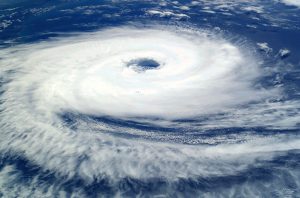
Natural areas can act as storm buffers and provide ecosystem services that have allowed species to persist for millenia through Florida’s annual hurricane season.
Help Protect infrastructure, the environment, and our wildlife populations!
Additional Resources
UF: Hurricane Impacts on Florida’s Agriculture and Natural Resources
Posted: June 1, 2022
Source: UF/IFAS Alert – https://blogs.ifas.ufl.edu/



